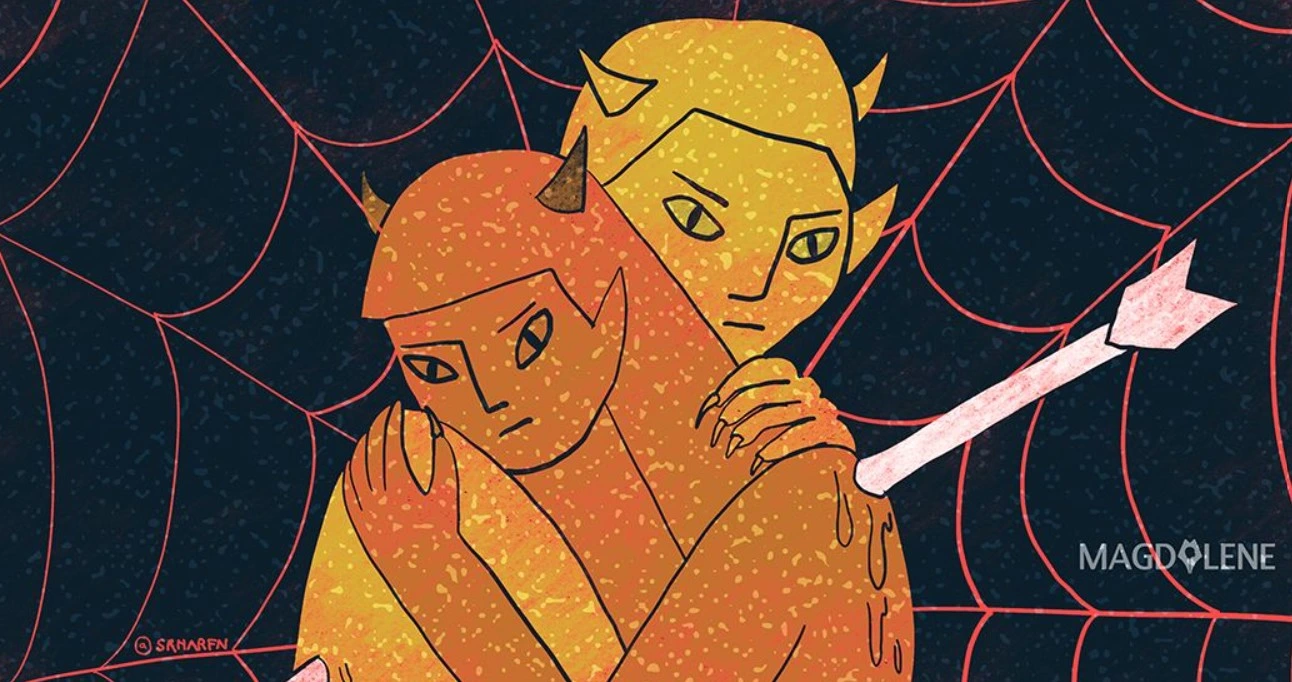How Tumblr Raised a Generation of Feminists

Like so many millennials, my teenage years on the multimedia microblogging platform, Tumblr, introduced me to feminist politics, which inspired my burgeoning interest in gender and feminism at university. My experiences as a Tumblr teen at the height of its popularity inspired my book, Feminist Fandom: Media Fandom, Digital Feminisms, and Tumblr, which examines the platform in the early- to mid-2010s.
By the end of the 2010s, reports indicated that the majority of young women identified as feminists – a far cry from the preceding decade marked by ambivalence and unease, if not outright hostility, toward feminism.
From high-profile celebrities such as Beyoncé and Emma Watson declaring themselves feminists, to feminist books dominating the bestseller charts, to feminist commentary in Elle and Teen Vogue, popular culture in the 2010s was marked by the sudden and spectacular resurgence of feminist politics.
Feminism, it seemed, had lost its former reputation as an outdated and dirty word. By 2017, feminism was so central to the zeitgeist that it was declared the Merriam-Webster word of the year.
Many commentators have argued that feminism’s visibility on social media was instrumental to this revival, ushering in its fourth wave. And few social media platforms received quite so much attention for their progressive, queer and feminist ethos as Tumblr.
Since its conception in 2007, Tumblr has developed a reputation for its appeal to marginalised users, especially LGBTQ+ youth, girls and young women, and people of colour. Widely used for sharing knowledge, community building and personal and creative expression, both Tumblr and its users readily embraced its reputation as a space committed to social justice and the open, self-governing exchange of ideas.
Why and how, I wondered when writing my book, did this platform in particular play such a central role in the feminist experiences and identities of so many of my millennial peers? Here’s what I found.
Also read: Do Feminists Have Better Sex? Yes, They Do
1. Design
The design and functionality of Tumblr differentiated it from other popular platforms at the time. Unlike Facebook, where explicit identity cues – including your real name, age and location – are required for use, the only identity information Tumblr required of users was their age, email address and a pseudonymous username.
Tumblr allowed users to have a high level of control over their visibility and the way they presented themselves. By virtue of its simplicity, customisability and (initially) lax approach to content moderation, Tumblr enabled a greater sense of privacy and freedom of expression than its more popular competitors. This made the site appealing to those hoping to explore identities, issues and interests that could be unwelcome elsewhere.
Tumblr’s anonymity made it feel safer for its marginalised users, inviting curiosity, experimentation and openness in those important first encounters with feminism.
2. Broad Definition of Feminism
Feminists have long emphasised that no single or universal “feminism” exists. Few versions of feminism on Tumblr achieved the height of attention enjoyed by liberal, white, western, middle-class feminism. But others nevertheless found a footing there, providing insight into the relationship between feminism and anti-racism, queer liberation, anti-imperialism, anti-capitalism and more.
The wide variety of marginalised perspectives and voices on Tumblr combined to play an educational and consciousness-raising role in the lives of its users, offering more complex and critical insights into intersecting inequalities.
3. Culture
For many users, Tumblr’s ultimate appeal lay in its mixture of political and educational content and content that was more playful, leisure-oriented and interest-based.
Many of the Tumblr users I interviewed for my book described their Tumblr blogs as a highly personal repository of all of their passions and interests, from personal life to pop culture and politics. As Emily, who is now in her late 20s, recalled: “I got my Tumblr account when I was 14. I remember an acquaintance suggested it, so I checked it out, and it really offered me a place to collate all my interests. I fell down the rabbit hole pretty quickly.”
When we last spoke in 2018, she said that she was hesitant to leave Tumblr, describing it as a “living document of everything I’ve ever been interested in”.
The mixture of personal and political material on Tumblr served an important purpose for young feminists on the platform. No longer was feminism an abstract, academic and detached endeavour. Instead, it was immediate, engaging and playful, embedded into a bespoke timeline compiling users’ every interest, passion and political affinity.
Also read: Is It True that Feminist Tend to Hate Men?
Decline and Nostalgia
Tumblr’s controversial adult content ban in 2018 was widely seen as a death knell heralding its demise and signalling the end of an era for a Tumblr feminism marked by the embrace of different sexual and gender identities.
Yet the ban’s partial reversal in November 2022 has ushered in hopes of a Tumblr revival. These hopes are built on Tumblr nostalgia: a yearning for an imagined past of the platform centring its progressive sensibility.
This yearning is partially driven by doubts about whether today’s popular platforms will harbour the same feminist potential for the next generation. For example, while TikTok has shown some signs of promise, it’s also home to prominent anti-feminist communities and has come under fire from marginalised content creators.
Moreover, its focus on visibility and exposure, compared to Tumblr’s focus on pseudonymity, makes users vulnerable to networked harassment, which, as many feminists have noted, disproportionately impacts women and gender minorities.
Despite its imperfections, Tumblr’s unique design, culture and sensibility combined to shape a generation of feminists in the 2010s. I don’t see any modern websites or apps that would be able to follow suit in the 2020s.
Briony Hannell, University Teacher in Sociology, University of Sheffield.
This article was first published on The Conversation, a global media resource that provides cutting edge ideas and people who know what they are talking about.




















